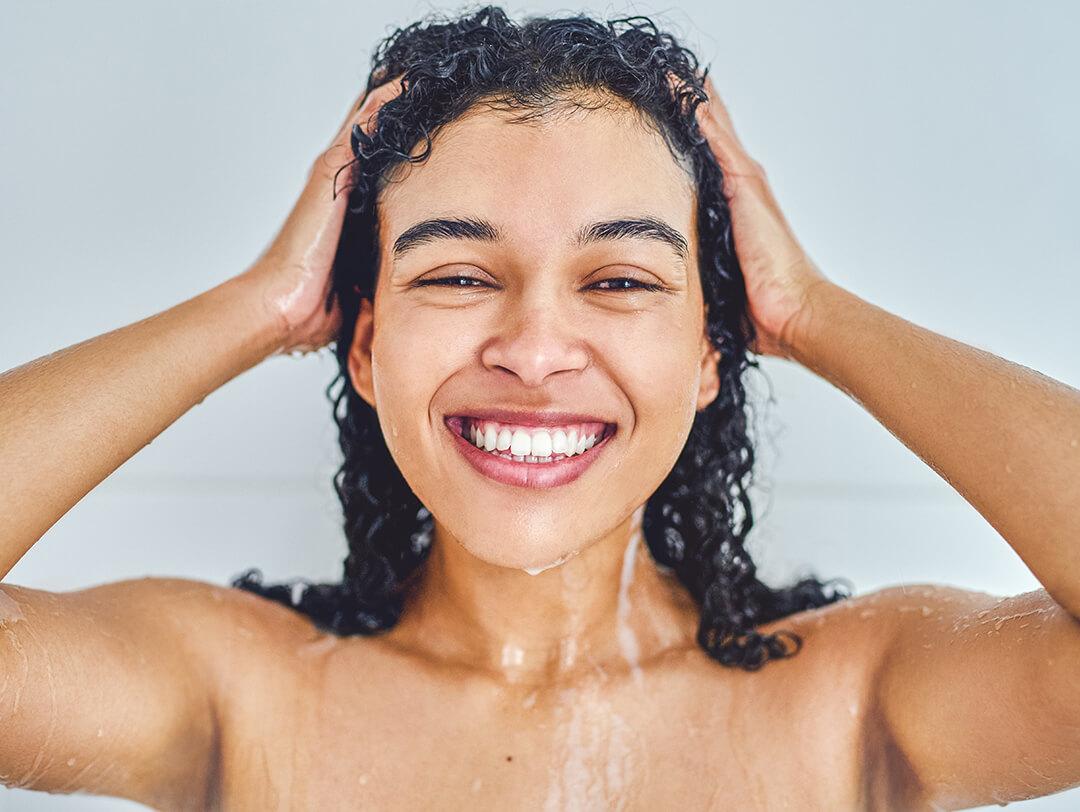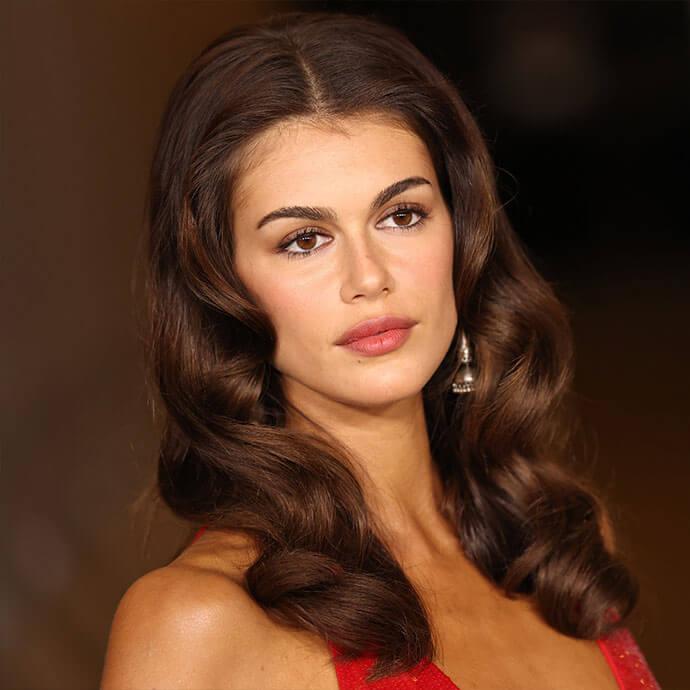Fact: Following the Curly Girl Method Will Totally Transform Your Curls



Cortney Clift


As stunning as healthy, bouncy curls are, they certainly require a lot of hard work. Keeping your curls in tip-top shape involves a lot of research and specialized care. You'll need to know your curl type, your hair porosity type, and of course, you'll also need to make sure you're using the right curly hair shampoo and conditioner as well as the best leave-in hair products. Even the way you dry the hair post-shower can make a world of difference for this delicate hair type.
If this all sounds overwhelming, the Curly Girl Method is here to help. This trusted hair care method is essentially a hair diet for your curls. It helps them to look extra defined, healthy, and frizz-free. It also helps you to get a better understanding of your specific curl pattern and the products that work best for you.
Below, we're diving into the basics of the Curly Girl Method (CGM for short)–what it is, who it's best for, which products to invest in, and which to toss. Read on to fast track your way to your best hair yet.


It's about glam time you treated yourself.
MEET THE EXPERT
Candace Witherspoon is the owner of Candace Witherspoon Salon, a multi-texture modern hair salon in New York City.
What is the curly girl method?
The Curly Girl Method was originally developed by curl expert and Devachan co-founder Lorraine Massey in 2007. It outlines specific hair care products and techniques to both use and avoid in order to transform your curly hair.
If you follow all the guidelines, you're sure to see visible results–maybe not instantaneously but in due time. "When you are committed to the curly girl method, your hair becomes healthier and more nourished from the inside," says curl hair expert and hairstylist Candace Witherspoon. "You'll see more definition no matter the texture–wavy, curly, or super curly."
Massey's method was initially published in a book called Curly Girl: The Handbook in 2010. Since then, many hair experts have built upon her guidelines to share additional tips and tricks online to include specific instruction for an even wider variety of curly types.
Is the curly girl method right for my hair?
Because different curl patterns require a wide variety of different products, this method is essentially a set of do's and don't's for everyone with curly hair. If you have straight hair, the CGM may not be the best routine for your hair type. Curl types 2C to 4A are likely to benefit most from following the CGM.
Getting started: What you need to know:
For a detailed list of CGM do's and don't's it's worth investing in Massey's handbook, but to get you started, here are two absolutely essential takeaways.
1. Avoid hair products with sulfates and (most) silicones.
"Shopping for curly shampoos can be both fun and tricky," says Witherspoon. "You want to use a product with healthy ingredients and stay away from products that have sulfates, parabens, silicones, and propylene glycol in them."
Sulfates are what give shampoos and some styling products that nice bubbly lather. Unfortunately, they're too aggressive of a cleanser for this delicate hair type and they tend to strip curly hair of its natural oils. This causes it to dry out faster, making it frizzy and prone to breakage.
Silicones are commonly found in conditioning products. They coat each hair strand to give hair that ultra-smooth, almost slippery feel. For straight hair types, silicones can help the hair look soft and shiny, but for curly hair types, silicones often cause buildup which leads to heavier curls that are often limp and lacking bounce.
However, it is worth noting that there are two common types of silicones: water-soluble silicones and non-soluble silicones. The latter is the type you should always steer clear of. Non-soluble silicones cannot be removed with water and they seal the hair cuticle which blocks other hydrating products from being able to penetrate into the deeper layers. One of the only ways to remove non-soluble silicones is by using a clarifying shampoo - which can be drying for curly hair and should only be used extremely sparingly. On the other hand, water-soluble silicones can easily be washed out of the hair using a sulfate-free shampoo or a co-wash product. These silicones do not result in heavy buildup.
Finding the sulfates and silicones on an ingredient label isn't always an easy task. They often have long, foreign-sounding names like Alkylbenzene Sulfonate and Amodimethicone. As a general rule of thumb, ingredients that end in “ate”, are typically a sulfate. Ingredients that end in "cone" are typically a silicone. It's worth keeping a full list of the sulfates and silicones that should be avoided for curly hair handy so that you can cross-reference it whenever you're vetting a new product. You can also plug the name of a product into a specialized search engine like CurlScan, which will tell you if a product is approved for the CG method.
2. Use heat styling techniques extremely rarely.
For natural hair and curly hair types, 9.9 out of 10 times, the best way to dry the hair is to air dry it. Naturally curly hair is extremely prone to dehydration and has a brittle structure that is easily damaged by heat. When you're just starting out with the Curly Girl Method, it's best to skip hot tools at all costs to allow your curls to truly transform.
If at some point, you do need to use a hair dryer, use it on the lowest heat setting possible, always use a heat protectant product first, and use a diffuser attachment that you can plop the curls into so that you do not disrupt the curl pattern.
What to Avoid:
In addition to all the no-go products, ingredients, and techniques listed above, Witherspoon says, "Stay away from using harsh drying gels, excessive tight buns, and using too much oil on dry hair." Below are two more super important things to avoid when abiding by the Curly Girl Method.
1. Don't dry the hair with a bath towel.
When you hop out of the shower, don't twist a terry cloth towel around your wet hair to dry it. Terry cloth towels can absorb too much moisture from curly hair. Plus, the rough texture of the towel can cause more frizz and disturb your natural curl pattern. Instead, try plopping wet hair into a t-shirt or better yet a microfiber towel to remove excess moisture. These will keep your curls intact and help your hair retain essential moisture while also preventing frizz.
2. Don't use a hairbrush.
Put down the paddle brush. While detangling curls is essential, how you do it makes a massive difference. Aggressively brushing through curls can severely disrupt the curl pattern and cause breakage and frizz–especially if you brush it while it’s dry. This can be true for those with wavy hair and especially if you have kinky or coily hair.
Instead, use your fingers to gently detangle or use a wide-tooth comb while the hair is still wet. Ideally, if you use a wide-tooth comb, use it while you're still in the shower and still have conditioner in your wet hair.
Curly girl method approved products:
Witherspoon recommends looking for "products that are rich in aloe vera, shea butter, avocado oil, and lavender oil." Here a three must-haves if you're just getting started with the Curly Girl Method.
1. A go-to co-wash conditioner
Instead of a sulfate-free shampoo and silicone-free conditioner, you could instead turn to a CGM-approved co-wash product. This specialized hair care product is short for the phrase “conditioner washing.” It's also often referred to a "no-poo" or "low-poo." The idea is to skip shampooing and only wash hair with a cleansing conditioner that contains a small trace of cleansing agents. This can help to gently cleanse while moisturizing the hair. For a full breakdown on how to co-wash, check out our guide.
2. Leave-in conditioners
Leave-in conditioners that are free of non-soluble silicones are a must for almost all curly hair types. These will infuse additional hydration into the hair and can also help to revive curls between wash days. Two CGM-approved leave-in conditioners we love are the CURL KEEPER® Leave-In Conditioner and the ANDALOU NATURALS Argan Oil & Shea Moisture Rich Leave-In Conditioner.
3. A Curl Defining Cream
Curl defining creams are a must for all people with curly hair. However, the type of curl cream you use will vary widely depending on your hair's texture and porosity. People with type 2 or 3 curls might use a lighter curl cream while type 4 hair can handle heavier butter and creams without being weighed down.
For wavy hair types or type 3A and 3B hair, try a curl cream like the BRIOGEO HAIR CARE Curl Charisma™ Rice Amino + Avocado Leave-in Defining Crème. If you have type 3C or type 4 hair and need something a bit heavier with rich hydration, try the QHEMET BIOLOGICS Cocoa Tree Detangling Ghee.
Follow these essential steps, and you'll be well on your way to your best hair yet. Remember, everyone's curly hair journey is different. Don't be afraid to experiment with different techniques and products to find a customized hair routine that works best for your unique hair texture. The beauty of curly hair is that no two heads are exactly the same!
Want in on all the IPSY Glam Bag fun? Take our Beauty Quiz now to get started. Already an Ipster? Refer your friends to earn points, which you can use toward products. Either way, don’t forget to check us out on Instagram and Twitter @IPSY.
Liked this post? Share!
Related Stories


Hair
6 Hair Trends Set to Take Over in 2026, From Bixie Cuts to Bouncy Blowouts
Published on Dec 5, 2025 • 5 min read


Hair
21 Easy Hairstyles to Enhance Your Natural Curls and Coils
Published on Dec 3, 2025 • 11 min read


Hair
The Ultimate Guide to Styling Short Hair
Published on Dec 1, 2025 • 11 min read


Hair
From Bangs to Blonde: The Hair Trends Taking Over 2025
Published on Dec 16, 2024 • 5 min read


Hair
Scalp Exfoliation Is the Key to Healthier Hair—Here’s How to Do It Correctly
Published on Nov 21, 2025 • 9 min read


Hair
The 10 Best Hair Masks and Conditioners to Promote Hair Growth
Published on Mar 11, 2024


Hair
20 Trendy Hairstyles That’ll Make You the Life of the (Holiday) Party
Published on Oct 15, 2025 • 9 min read


Hair
Easy Thanksgiving Hairstyles to Look Polished While You Feast
Published on Oct 2, 2025 • 6 min read


Beauty Picked Just for You
Get 5 products worth up to $70
Plus exclusive access to epic deals up to 80% off
Starting at just $14/month. Cancel anytime.